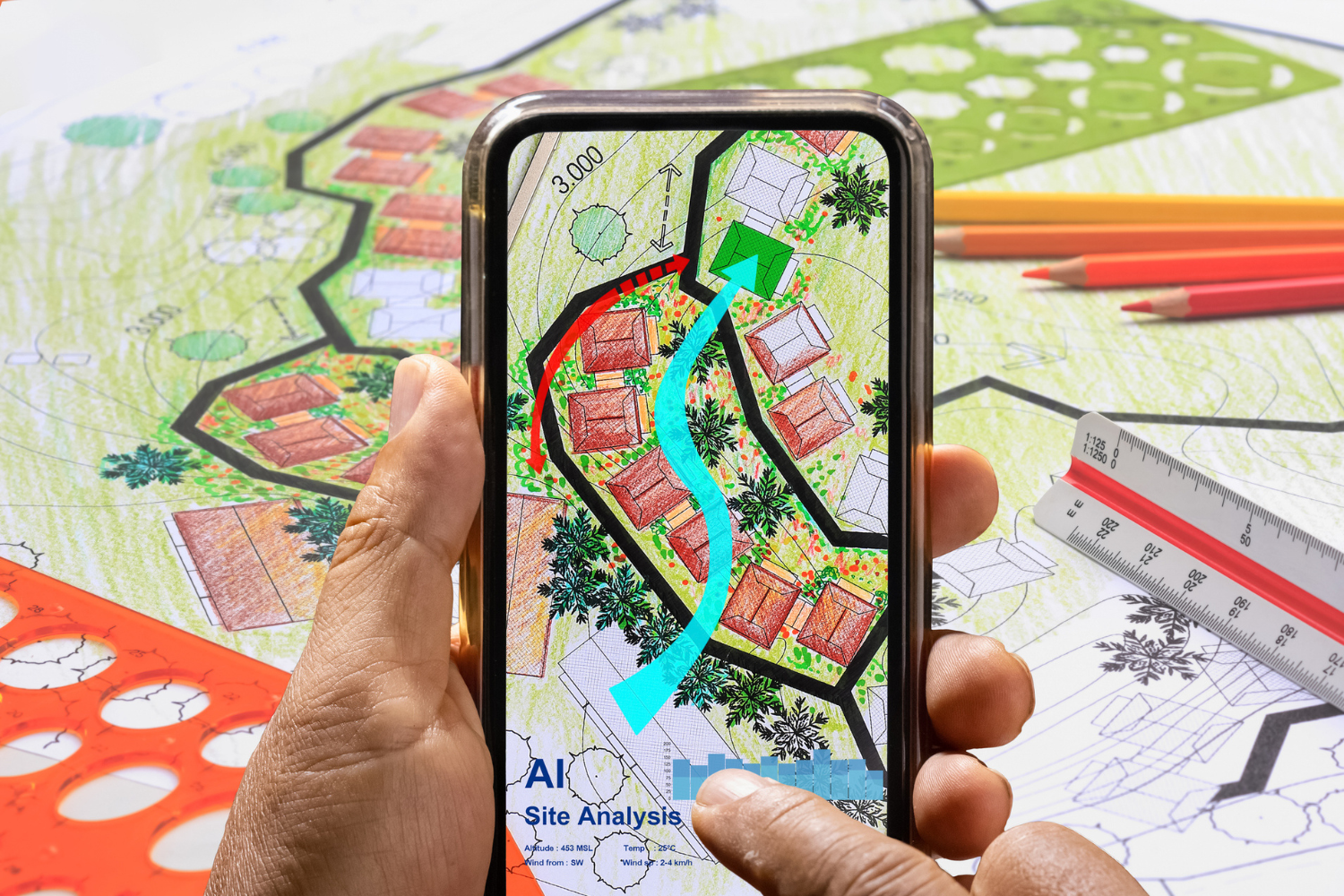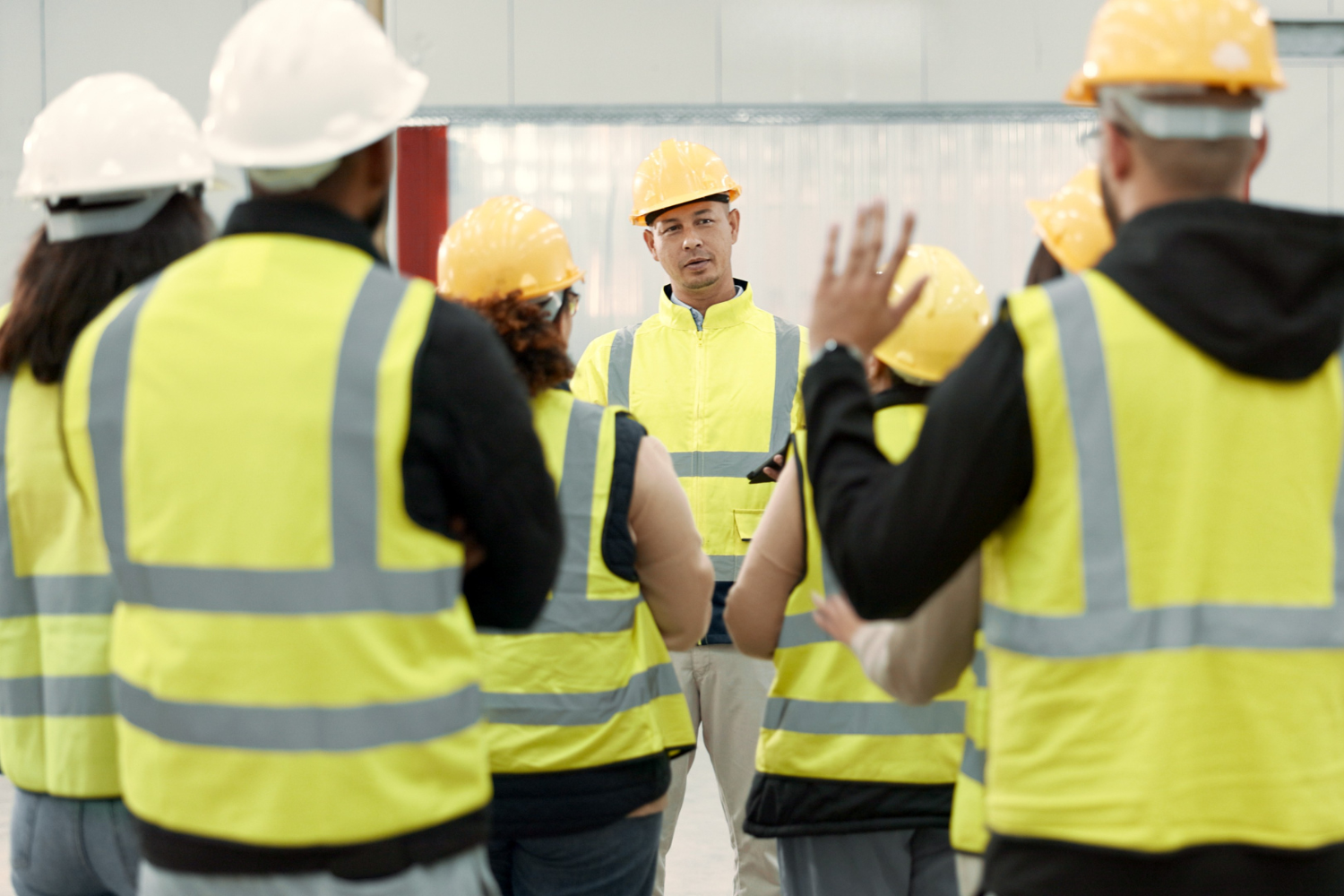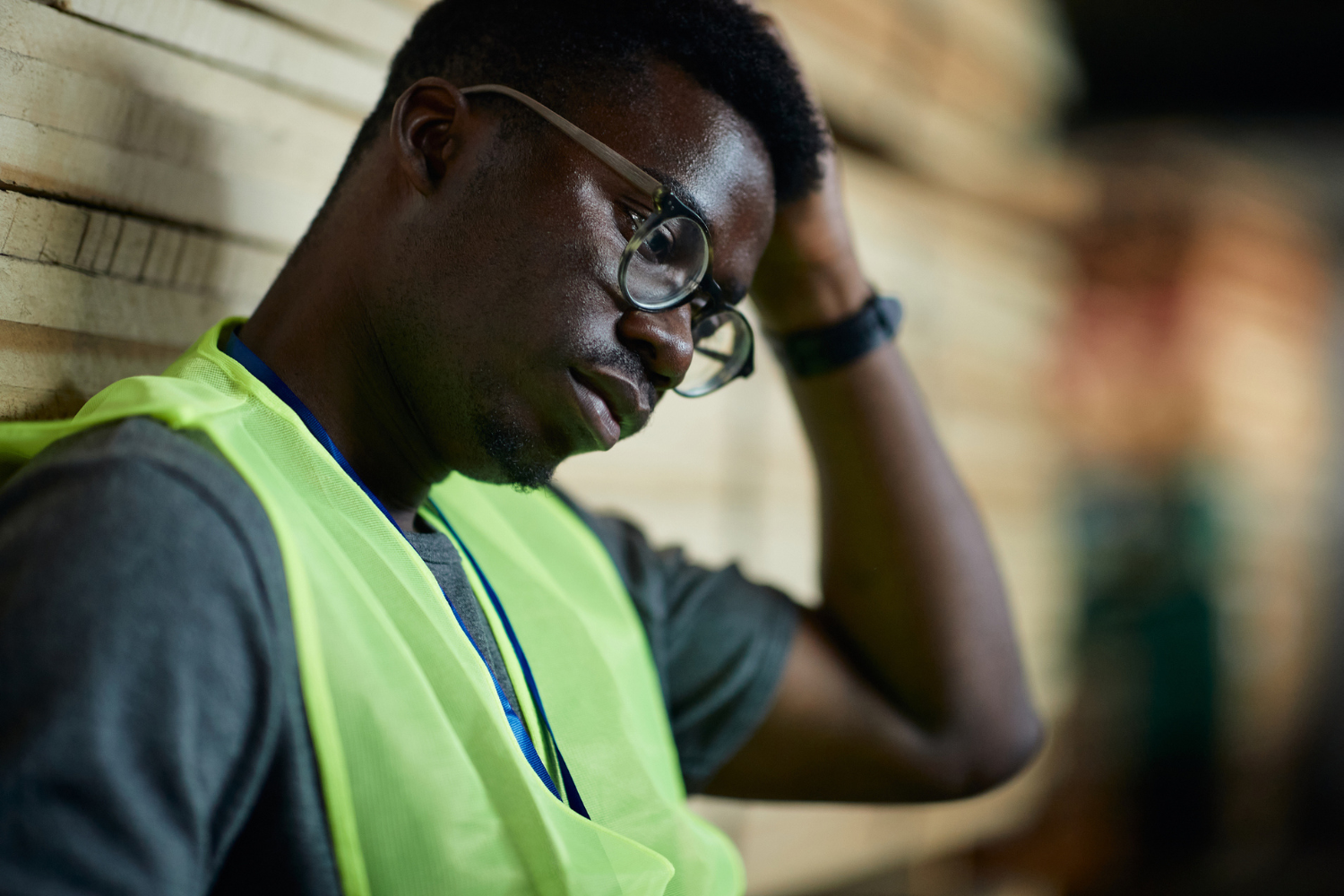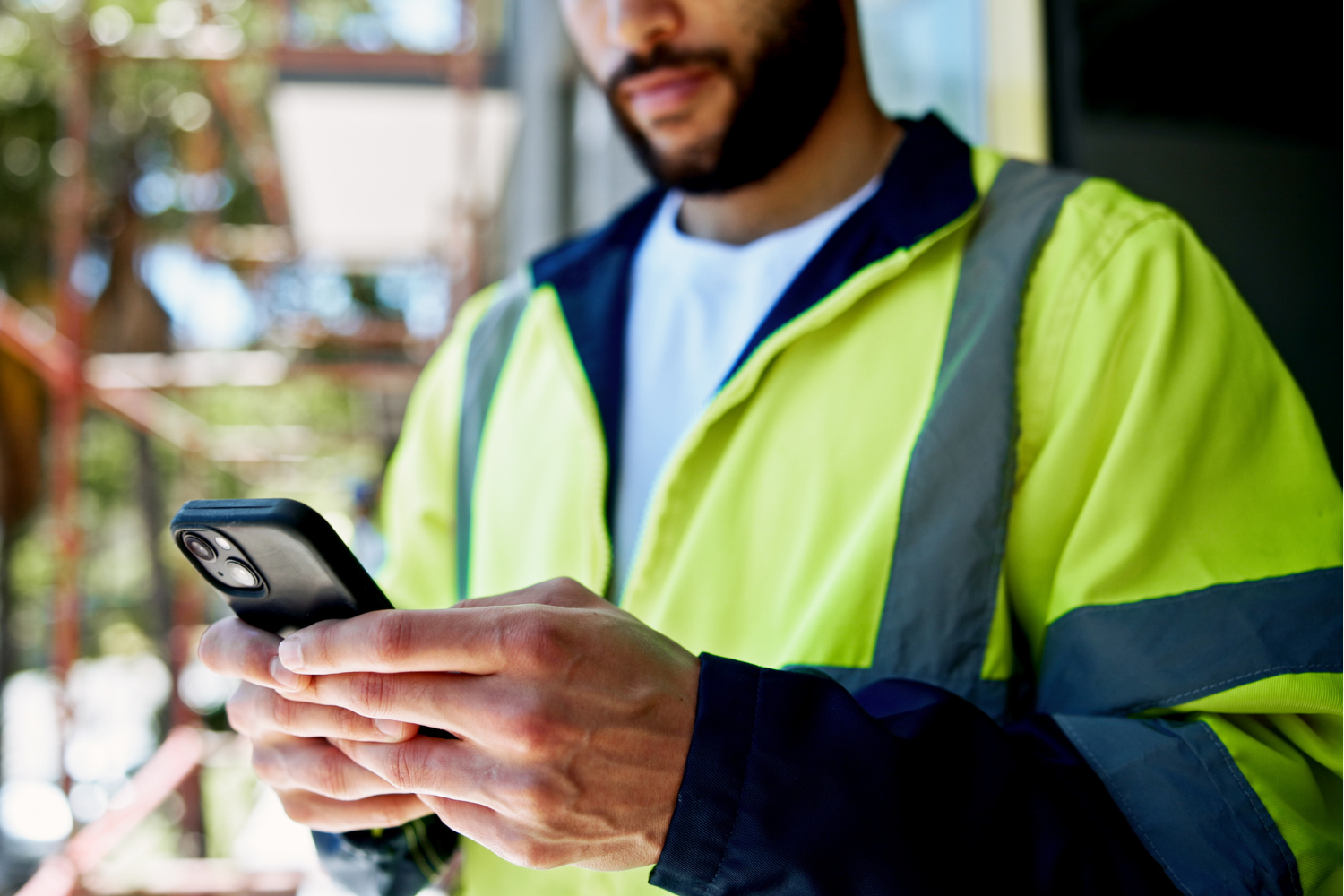Blog
.png)
Say Goodbye to Day-One Delays with Team Engine Onboarding
Employee onboarding automation that collects I-9s, W-4s, offer letters, and signatures via text so new hires are ready before day one.

Employee Communication That Drives Retention and Trust
Employee communication is the backbone of strong culture. This article shares partner insights on how it impacts engagement, retention, and productivity.

The Best Recruiting Software for Growing Field Teams
Team Engine CEO Carlos del Pozo talks with ‘Greenside Up’ about how recruiting software helps field-based businesses improve hiring and retention.

Top Employee Feedback Questions to Improve Engagement
Employee feedback questions that yield insights into the employee experience, guide improvements, and strengthen long-term retention.

Construction Onboarding Mistakes That Hurt Profits
Construction onboarding best practices help prevent costly mistakes, reduce risk, and build stronger crews from day one.

What Really Drives Employee Retention
Real-world employee retention strategies to improve engagement, reduce turnover, and build stronger teams through compensation, growth, and culture.

3 C’s of Hiring: A Candidate Screening Framework
A quick, practical guide for assessing candidates for a job using the 3 C’s (character, competence, and chemistry) to improve hiring outcomes and retention.

AI Recruiting Tools and Use Cases for Every Hiring Stage
See how AI recruiting tools improve sourcing, screening, interviewing, and onboarding to make every stage of the hiring process more effective.

How AI Adoption is Reshaping the Landscaping Industry
How AI adoption helps landscaping companies overcome labor gaps, reduce back-office strain, and stay ahead in a tech-driven industry.

Employee Communication That Leads to Action, Not Noise
Experts share guidance for effective employee communication with different ways to reach deskless, multilingual teams that turn messages into action.
%20-%20webflow%20blog%20post%20thumbnail.png)
Summer 2025 Product Update
Highlights from our Summer 2025 Product Update Webinar, including onboarding automation, AI tools, and new candidate sourcing features.
%20-%20webflow%20blog%20post%20thumbnail%20(1).png)
Spring 2025 Product Update
New AI hiring tools, a mobile app, and automation updates to help our customers hire faster, onboard efficiently, and manage field teams with ease.

7 Onboarding Mistakes That Hurt Day-One Productivity
These seven onboarding mistakes can derail new hires fast. Fix them now to avoid costly turnover and set your team up for success from day one.

5 Tips for Effective Employee Communication in the Field
Strategies and tools for effective employee communication to keep field crews informed, engaged, and aligned across locations.

How Does ZipRecruiter Work for Employers?
Find out how much it costs to post a job on ZipRecruiter and how to use TrafficBoost, their paid advertising option.

It’s Time to Prioritize Mobile Recruiting Software
Why mobile recruiting software is now essential for hiring deskless workers, and how text-first tools are solving ghosting, drop-off, and early turnover.

Key Warning Signs of Communication Issues in the Workplace
Part 1 in a series on communication issues at work and how to fix them. Industry experts share real-world signs of breakdowns and where they come from.

6 Ways to Improve Your Hiring Process and Stand Out
Six ways to improve the hiring process, strengthen retention, and compete for talent in field-based industries—backed by real-world expertise.

How to Hire Employees in Deskless, Blue-Collar Industries
How to hire employees in field-based industries with a step-by-step process covering sourcing, screening, onboarding, compliance, and retention strategies.

Find the Text Recruiting Platform That Cuts Your Time to Hire
Why text recruiting is ideal for blue-collar hiring—plus key features, leading platforms, best practices, and templates to get started.
![How Top Landscapers Build Strong Teams [webinar recap]](https://cdn.prod.website-files.com/65e56c6bad9a499a5c6d36b7/684c3116207aa54c16961914_Aspire%20-%20Fireside%20Chat%20-%20share%20image%20for%20blog.png)
How Top Landscapers Build Strong Teams [webinar recap]
Learn how top landscaping companies like Stay Green are building people-first teams through better communication, leadership visibility, and long-term workforce planning.

How to Recruit Employees for Reliable Field Teams
The best ways to recruit (and retain) employees for labor-intensive roles in home services, construction, landscaping & other deskless industries.

Commercial Landscaping Software for Big Projects
Compare top commercial landscaping software solutions for contractors, construction management, and growing small businesses in the green industry.
.png)
Why Your Job Ad Isn’t Getting Applicants (and What Employers Can Do About It)
Get step-by-step guidance on how to write a job ad that works, plus a free AI-powered template to help you attract better applicants.
.png)
Building Trust in the Workplace
Build employee trust in the workplace through transparency, strong communication, and accountability to improve retention and team performance.

How Team Engine Helps Landscaping Companies Hire Smarter
How landscaping companies can use Team Engine to streamline hiring, improve communication, and retain frontline employees with automation and texting tools.

8 Workforce Trends Shaping 2025 & How You Can Stay Ahead
Get ahead of 2025 workforce trends with insights from Team Engine partners on how their clients are approaching hiring, retention, and automation.
.png)
Introducing the Team Engine Mobile App
Team Engine’s new mobile app brings messaging and push notifications to your phone, making it even easier for managers to stay connected with the workforce.

The Cost of Silence in Construction Safety
This article breaks down the cost of workplace injuries and explains how to improve construction safety through communication, training, and culture.

What SHRM’s Latest Discussion Reveals About AI for HR
Key takeaways from SHRM’s latest discussion on AI in HR, including trends, challenges, and how businesses can successfully adopt HR AI tools.

Why Tech & Innovation Are Attracting New Landscaping Talent
Tech in landscaping is becoming a powerful recruiting strategy, helping companies attract next-gen talent with autonomous mowers and modern tools.
